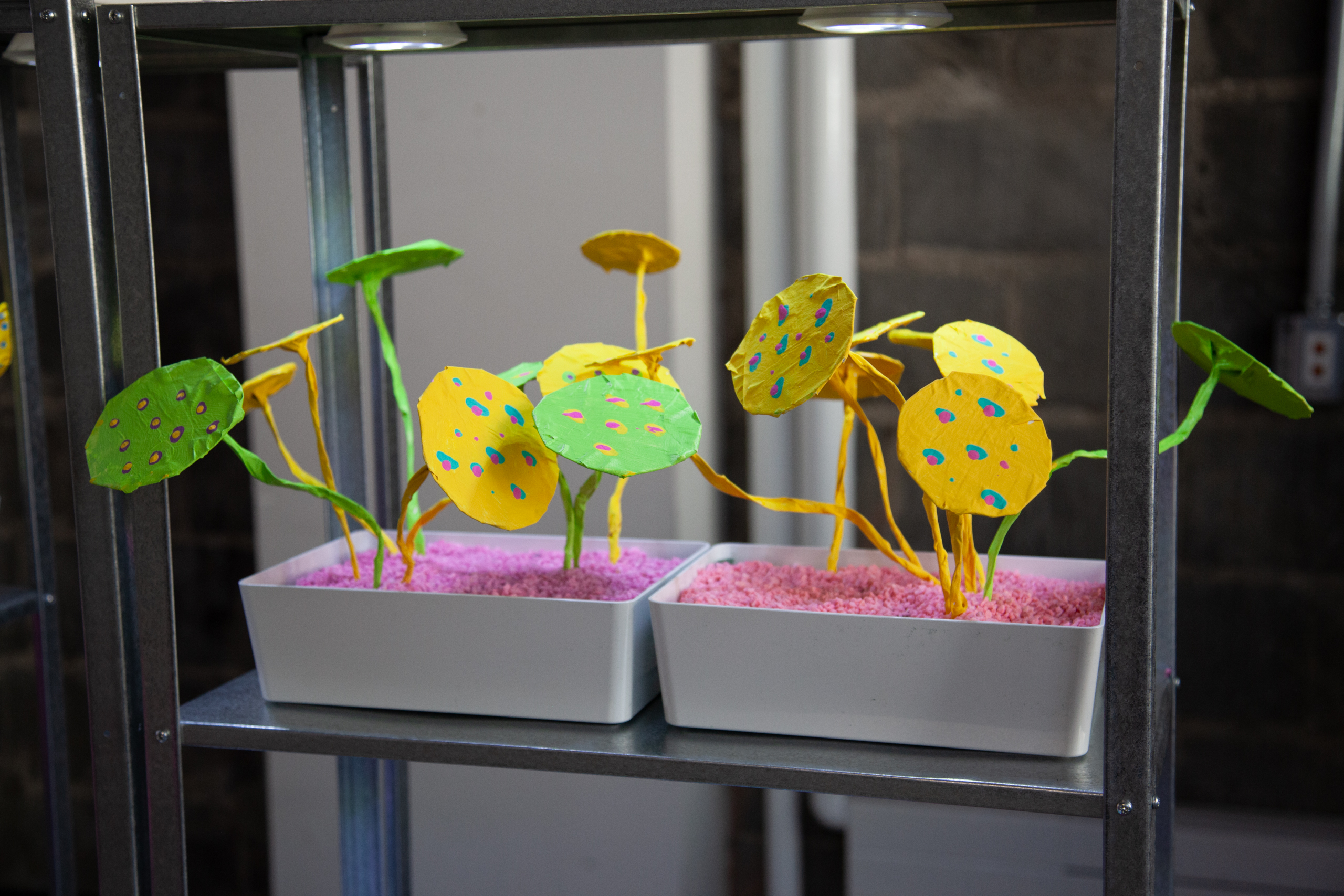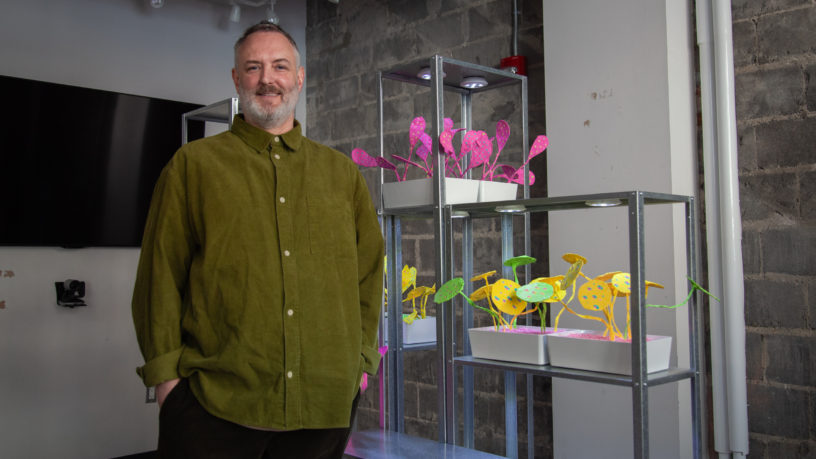By Kayla Thompson and Danielle Reid

Toronto Metropolitan University (TMU) PhD student, instructor and artist, Stephen Severn explored themes of identity with their art installation Forticulture during Nuit Blanche this weekend.
From sunset to sunrise, people of all ages celebrated the city’s finest artists during the free, all-night event consisting of exhibitions across downtown Toronto, Etobicoke and Scarborough.
The festival has been a staple in the city’s arts scene since it was adopted from the Paris festival by the same name in 2006. It has since become a night for Torontonians and tourists to explore the city’s rich culture and for Toronto-based contemporary artists like Severn to showcase their work in safe, public and renowned spaces.
“I would always go to Nuit Blanche and imagine myself in it one day so it’s really exciting to be a part of it now,” Severn told The Eyeopener.
Supported by the Visual Artists Creation grant funded by Toronto Arts Council, Severn’s Forticulture is a papier-mâché, leaf-like sculpture, composed of printed copies of queer and transphobic articles. The leaves, painted over with dynamic patterns and bright colours, symbolize how “threats to queer identity have been hidden behind a thin veneer of coded-language,” according to the project’s official Nuit Blanche bio.
Their work is a unique interpretation of this year’s theme, “Breaking Ground.” According to the City of Toronto website, artists were encouraged to create pieces that analyzed the impacts of climate change and how the development of Toronto’s urban landscapes impacts communities. “I was thinking about strength-building, hence the ‘fort’ in Forticulture and then also horticulture being plant-related. Plants coming out of the ground,” they said.
Severn said their objective is to evoke “queer joy” in their audiences, as a method of “resistance and refusal.”
The process of creating Forticulture was self-explanatory for Severn who, during the month-long endeavour of passionately painting flowers at home, realized that they weren’t experiencing joy due to time constraints.
“So then I thought, ‘this isn’t working. This isn’t the point of this exercise.’ I decided to slow down, take my time and savour the process. I’ve learned to appreciate the journey more,” Severn said.
Not only is Severn a skilled multidisciplinary artist, they’re also a committed PhD student studying media and design innovation at TMU, blending their creative endeavors with theory and academia. “I’m fortunate to tailor all my artistic projects to my research interests. The work I am doing for my PhD also aligns with my artistic exploration,” they said.
Despite Severn’s deliberate approach to challenging misconceptions about queerness, they emphasize that Forticulture’s artistic expression is more emotionally driven than grounded in their research. “The purpose of Forticulture isn’t necessarily to preach or teach queer theory. While changing minds would be great, that wasn’t my main motivation for it.”
Looking ahead, Nuit Blanche remains a significant accomplishment for Severn, but their primary focus is on advancing their PhD studies, engaging in teaching at the TMU School of Interior Design, and allowing themselves much-needed rest after the challenging yet rewarding preparations for their debut exhibit at Nuit Blanche.










Leave a Reply